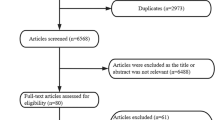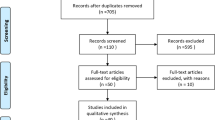Abstract
Background and objectives
Cerebral aneurysms in complex anatomical locations and intraoperative rupture can be challenging. Many methods to reduce blood flow can facilitate its exclusion from the circulation. This study evaluated the safety and efficacy of using adenosine, rapid ventricular pacing, and hypothermia in cerebral aneurysm clipping.
Methods
Databases (PubMed, Embase, and Web of Science) were systematically searched for studies documenting the use of adenosine, rapid ventricular pacing, and hypothermia in cerebral aneurysm clipping and were included in this single-arm meta-analysis. The primary outcome was 30-day mortality. Secondary outcomes included neurological outcomes by mRs and GOS, and cardiac outcomes. We evaluated the risk of bias using ROBIN-I, a tool developed by the Cochrane Collaboration. OpenMetaAnalyst version 2.0 was used for statistical analysis and I2 measured data heterogeneity. Heterogeneity was defined as an I2 > 50%.
Results
Our systematic search yielded 10,100 results. After the removal of duplicates and exclusion by title and abstract, 64 studies were considered for full review, of which 29 were included. The overall risk of bias was moderate. The pooled proportions of the adenosine analysis for the different outcomes were: For the primary outcome: 11,9%; for perioperative arrhythmia: 0,19%; for postoperative arrhythmia: 0,56%; for myocardial infarction incidence: 0,01%; for follow-up good recovery (mRs 0–2): 88%; and for neurological deficit:14.1%. In the rapid ventricular pacing analysis, incidences were as follows: peri operative arrhythmia: 0,64%; postoperative arrhythmia: 0,3%; myocardial infarction: 0%. In the hypothermia analysis, the pooled proportion of 30-day mortality was 11,6%. The incidence of post-op neurological deficits was 35,4% and good recovery under neurological analysis by GOS was present in 69.2%.
Conclusion
The use of the three methods is safe and the related complications were very low. Further studies are necessary, especially with comparative analysis, for extended knowledge.

















Similar content being viewed by others
Data availability
No datasets were generated or analysed during the current study.
Abbreviations
- AVM:
-
Arteriovenous Malformation
- AV:
-
Atrioventricular
- GOS:
-
Glasgow Outcome Scale
- RVP:
-
Rapid Ventricular Pacing
- PRISMA:
-
Preferred Reporting Items for Systematic Reviews and Meta-Analysis
- PROSPERO:
-
International Prospective Register of Systematic Reviews
References
Thompson BG, Brown RD Jr, Amin-Hanjani S et al (2015) Guidelines for the management of patients with unruptured intracranial aneurysms: a Guideline for Healthcare professionals from the American Heart Association/American Stroke Association. Stroke 46(8):2368–2400. https://doi.org/10.1161/STR.0000000000000070
Belavadi R, Gudigopuram SVR, Raguthu CC, Gajjela H, Kela I, Kakarala CL, Hassan M, Sange I (2021) Surgical Clipping Versus Endovascular Coiling in the management of intracranial aneurysms. Cureus 13(12):e20478. https://doi.org/10.7759/cureus.20478PMID: 35047297; PMCID: PMC8760002
Bebawy JF, Zeeni C, Sharma S et al (2013) Adenosine-induced flow arrest to facilitate intracranial aneurysm clip ligation does not worsen neurologic outcome. Anesth Analg 117(5):1205–1210. https://doi.org/10.1213/ANE.0b013e3182a6d31b
Deshmukh AS, Priola SM, Katsanos AH, Scalia G, Costa Alves A, Srivastava A, Hawkes C (2024) The management of Intracranial aneurysms: current trends and future directions. Neurol Int 16(1):74–94. https://doi.org/10.3390/neurolint16010005PMID: 38251053; PMCID: PMC10801587
Rangel-Castilla L, Russin JJ, Britz GW, Spetzler RF (2015) Update on transient cardiac standstill in cerebrovascular surgery. Neurosurg Rev. ;38(4):595–602. https://doi.org/10.1007/s10143-015-0637-z. Epub 2015 May 1. PMID: 25931209
Higgins J, Thomas J, Chandler J et al (2023) Cochrane Handbook for Systematic Reviews of interventions Version 6.4 (updated 2023). Cochrane
Page MJ, McKenzie JE, Bossuyt PM, Boutron I, Hoffmann TC, Mulrow CD et al (2021) The PRISMA 2020 statement: an updated guideline for reporting systematic reviews. BMJ 372:n71. https://doi.org/10.1136/bmj.n71
Saldien V, Schepens T, Van Loock K, Vermeersch G, Wildemeersch D, Van Hoof V, De Belder F, Bosmans J, Vercauteren M, Menovsky T (2018) Rapid Ventricular Pacing for neurovascular surgery: a study on Cardiac and Cerebral effects. World Neurosurg 119:e71–e77 Epub 2018 Jul 17. PMID: 30026138
Aebert H, Brawanski A, Philipp A, Behr R, Ullrich OW, Keyl C, Birnbaum DE (1998) Deep hypothermia and circulatory arrest for surgery of complex intracranial aneurysms. Eur J Cardiothorac Surg. 13(3):223-9. https://doi.org/10.1016/s1010-7940(98)00018-9. PMID: 9628370
Al-Mousa A, Bose G, Hunt K, Toma AK (2019) Adenosine-assisted neurovascular surgery: initial case series and review of literature. Neurosurg Rev 42(1):15–22. https://doi.org/10.1007/s10143-017-0883-3Epub 2017 Jul 22. PMID: 28735438
Andrade-Barazarte H, Luostarinen T, Goehre F, Kivelev J, Jahromi BR, Ludtka C, Lehto H, Raj R, Ibrahim TF, Niemela M, Jääskeläinen JE, Hernesniemi JA (2015) World Neurosurg 84(6):1933–1940 Epub 2015 Sep 2. PMID: 26341426. Transient Cardiac Arrest Induced by Adenosine: A Tool for Contralateral Clipping of Internal Carotid Artery-Ophthalmic Segment Aneurysms
Bendok BR, Gupta DK, Rahme RJ, Eddleman CS, Adel JG, Sherma AK, Surdell DL, Bebawy JF, Koht A, Batjer HH (2011) Adenosine for temporary flow arrest during intracranial aneurysm surgery: a single-center retrospective review. Neurosurgery. 69(4):815 – 20;discussion 820-1. https://doi.org/10.1227/NEU.0b013e318226632c. PMID: 21637138
Benech CA, Perez R, Faccani G, Trompeo AC, Cavallo S, Beninati S, Berardino M (2014) Adenosine-induced cardiac arrest in complex cerebral aneurysms surgery: an Italian single-center experience. J Neurosurg Sci 58(2):87–94 PMID: 24819485
Gissen AJ, Matteo RS, Housepian EM, Bowman FO Jr. (1969) Elective circulatory arrest during neurosurgery for basilar artery aneurysms. JAMA 207(7):1315–1318 PMID: 5818323
Grabert J, Huber-Petersen S, Lampmann T, Eichhorn L, Vatter H, Coburn M, Velten M, Güresir E (2021) Rapid Ventricular Pacing as a Safe Procedure for Clipping of Complex ruptured and unruptured intracranial aneurysms. J Clin Med 10(22):5406. https://doi.org/10.3390/jcm10225406PMID: 34830688; PMCID: PMC8618334
Intarakhao P, Thiarawat P, Rezai Jahromi B, Kozyrev DA, Teo MK, Choque-Velasquez J, Luostarinen T, Hernesniemi J (2018) Adenosine-induced cardiac arrest as an alternative to temporary clipping during intracranial aneurysm surgery. J Neurosurg. ;129(3):684–690. doi: 10.3171/2017.5.JNS162469. Epub 2017 Oct 27. PMID: 29076786
Intarakhao P, Thiarawat P, Tewaritrueangsri A, Pojanasupawun S (2020) Low-dose adenosine-induced transient asystole during intracranial aneurysm surgery. Surg Neurol Int 11:235. https://doi.org/10.25259/SNI_79_2020PMID: 32874738; PMCID: PMC7451161
Khan SA, McDonagh DL, Adogwa O, Gokhale S, Toche UN, Verla T, Zomorodi AR, Britz GW (2014) Perioperative cardiac complications and 30-day mortality in patients undergoing intracranial aneurysmal surgery with adenosine-induced flow arrest: a retrospective comparative study. Neurosurgery. 74(3):267 – 71; discussion 271-2. https://doi.org/10.1227/NEU.0000000000000258. PMID: 24276504
Konczalla J, Platz J, Fichtlscherer S, Mutlak H, Strouhal U, Seifert V (2018) Rapid ventricular pacing for clip reconstruction of complex unruptured intracranial aneurysms: results of an interdisciplinary prospective trial. J Neurosurg 128(6):1741–1752 Epub 2017 Aug 18. PMID: 28820303
Lawton MT, Raudzens PA, Zabramski JM, Spetzler RF (1998) Hypothermic circulatory arrest in neurovascular surgery: evolving indications and predictors of patient outcome. Neurosurgery. 43(1):10–20; discussion 20 – 1. https://doi.org/10.1097/00006123-199807000-00009. PMID: 9657183
Lee SH, Kwun BD, Kim JU, Choi JH, Ahn JS, Park W, Yun JH (2015) Adenosine-induced transient asystole during intracranial aneurysm surgery: indications, dosing, efficacy, and risks. Acta Neurochir (Wien) 157(11):1879–1886 discussion 1886. https://doi.org/10.1007/s00701-015-2581-7
Levati A, Tommasino C, Moretti MP, Paino R, D’Aliberti G, Santoro F, Meregalli S, Vesconi S, Collice M (2007) Giant intracranial aneurysms treated with deep hypothermia and circulatory arrest. J Neurosurg Anesthesiol. 19(1):25–30. https://doi.org/10.1097/01.ana.0000211022.96054.4d. PMID: 17198097
Luostarinen T, Takala RS, Niemi TT, Katila AJ, Niemelä M, Hernesniemi J, Randell T (2010) Adenosine-induced cardiac arrest during intraoperative cerebral aneurysm rupture. World Neurosurg 73(2):79–83 discussion e9. https://doi.org/10.1016/j.surneu.2009.06.018
Mack WJ, Ducruet AF, Angevine PD, Komotar RJ, Shrebnick DB, Edwards NM, Smith CR, Heyer EJ, Monyero L, Connolly ES Jr, Solomon RA (2008) Deep hypothermic circulatory arrest for complex cerebral aneurysms: lessons learned. Neurosurgery. 62(6 Suppl 3):1311-23. https://doi.org/10.1227/01.neu.0000333796.21468.0f. PMID: 18695551
Meling TR, Romundstad L, Niemi G, Narum J, Eide PK, Sorteberg AG, Sorteberg WA (2018) Adenosine-assisted clipping of intracranial aneurysms. Neurosurg Rev 41(2):585–592. https://doi.org/10.1007/s10143-017-0896-yEpub 2017 Aug 17. PMID: 28819885
Powers CJ, Wright DR, McDonagh DL, Borel CO, Zomorodi AR, Britz GW (2010) Transient adenosine-induced asystole during the surgical treatment of anterior circulation cerebral aneurysms: technical note. Neurosurgery. 67(2 Suppl Operative):461 – 70. https://doi.org/10.1227/NEU.0b013e3181f7ef46. PMID: 21099573
Rehder K, Kirklin JW, Maccarty CS, Theye RA (1962) Physiologic studies following profound hypothermia and circulatory arrest for treatment of intracranial aneurysm. Ann Surg 156(6):882–889. https://doi.org/10.1097/00000658-196212000-00004PMID: 13973685; PMCID: PMC1466369
Sai Kiran NA, Mohan D, Sivaraju L, Raj V, Vidyasagar K, Hegde AS (2020) Mar-Apr;68(2):419–426 Adenosine-Induced transient asystole during surgical treatment of basilar artery aneurysms. Neurol India. https://doi.org/10.4103/0028-3886.284353. PMID: 32415018
Saldien V, Menovsky T, Rommens M, Van der Steen G, Van Loock K, Vermeersch G, Mott C, Bosmans J, De Ridder D, Maas AI (2012) Rapid ventricular pacing for flow arrest during cerebrovascular surgery: revival of an old concept. Neurosurgery. 70(2 Suppl Operative):270-5. https://doi.org/10.1227/NEU.0b013e318236d84a. PMID: 21937926
Schebesch KM, Proescholdt M, Ullrich OW, Camboni D, Moritz S, Wiesenack C, Brawanski A (2010) Circulatory arrest and deep hypothermia for the treatment of complex intracranial aneurysms–results from a single European center. Acta Neurochir (Wien) 152(5):783–792. https://doi.org/10.1007/s00701-009-0594-9Epub 2010 Jan 29. PMID: 20108105
Silverberg GD, Reitz BA, Ream AK (1981) Hypothermia and cardiac arrest in the treatment of giant aneurysms of the cerebral circulation and hemangioblastoma of the medulla. J Neurosurg. 55(3):337 – 46. https://doi.org/10.3171/jns.1981.55.3.0337. PMID: 7196440
Solomon RA, Smith CR, Raps EC, Young WL, Stone JG, Fink ME (1991) Deep hypothermic circulatory arrest for the management of complex anterior and posterior circulation aneurysms. Neurosurgery. 29(5):732-7; discussion 737-8. https://doi.org/10.1097/00006123-199111000-00015. PMID: 1961404
St Ville JM, Tobias E (1966) Intracranial surgery. Profound hypothermia and cardiac arrest. Arch Surg. 92(4):573-5. https://doi.org/10.1001/archsurg.1966.01320220129021. PMID: 5909236
Sullivan BJ, Sekhar LN, Duong DH, Mergner G, Alyano D (1999) Profound hypothermia and circulatory arrest with skull base approaches for treatment of complex posterior circulation aneurysms. Acta Neurochir (Wien). 141(1):1–11; discussion 11 – 2. https://doi.org/10.1007/s007010050259. PMID: 10071680
Uihlein A, Terry HR Paynews Jr, Kirklin JW (1962) Operations on intracranial aneurysms with induced hypothermia below 15 degrees C. and total circulatory arrest. J Neurosurg. 19:237-9. https://doi.org/10.3171/jns.1962.19.3.0237. PMID: 13923621
Dutta G, Singh D, Jagetia A, Srivastava AK, Singh H, Kumar A (2021) Endovascular management of large and giant intracranial aneurysms: experience from a tertiary care neurosurgery institute in India. J Cerebrovasc Endovasc Neurosurg 23(2):99–107. https://doi.org/10.7461/jcen.2021.E2020.08.00
Acknowledgements
The authors would like to thank Rhanderson Cardoso, MD, for the support in conducting this research. We would also like to thank the Meta-Analysis Academy (Instagram: @metaanalysis.academy) for the immense support in the elaboration of this project. The authors would also like to especially thank Matheus de Andrade Bannach, MD, our senior author and research mentor for his tireless contribution to the advancement of all our projects.
Funding
This research did not receive any specific grant from any government, private, or non-profit funding source.
Author information
Authors and Affiliations
Contributions
Conception and design of the research: J.P.M.P., G.B.N., and M.A.B.Acquisition of data: J.P.M.P., F.C.G., O.C.U.U., and G.B.N.Analysis and interpretation of the data collected: J.P.M.P., G.B.N., F.C.G., O.C.U.U., and M.A.B.Writing manuscript: O.C.U.U., G.B.N., F.C.G., J.P.M.P., and M.A.B.Critical revision of the manuscript for intellectual content: ALL AUTHORS.Coordination and supervision of project: M.A.B.Submission of manuscript: O.C.U.U.
Corresponding author
Ethics declarations
Conflict of interest
The authors of this meta-analysis declare no conflict of interest.
Ethics approval
Not applicable.
Consent to participate
Not applicable.
Consent to publish
Not applicable.
Additional information
Publisher’s Note
Springer Nature remains neutral with regard to jurisdictional claims in published maps and institutional affiliations.
Rights and permissions
Springer Nature or its licensor (e.g. a society or other partner) holds exclusive rights to this article under a publishing agreement with the author(s) or other rightsholder(s); author self-archiving of the accepted manuscript version of this article is solely governed by the terms of such publishing agreement and applicable law.
About this article
Cite this article
Nager, G.B., Pontes, J.P.M., Udoma-Udofa, O.C. et al. Efficacy and safety of adenosine, rapid ventricular pacing and hypothermia in cerebral aneurysms clipping: a systematic review and meta-analysis. Neurosurg Rev 47, 215 (2024). https://doi.org/10.1007/s10143-024-02450-9
Received:
Revised:
Accepted:
Published:
DOI: https://doi.org/10.1007/s10143-024-02450-9




